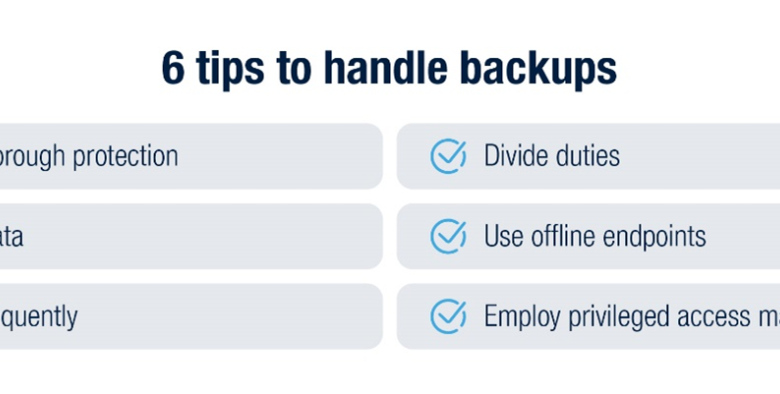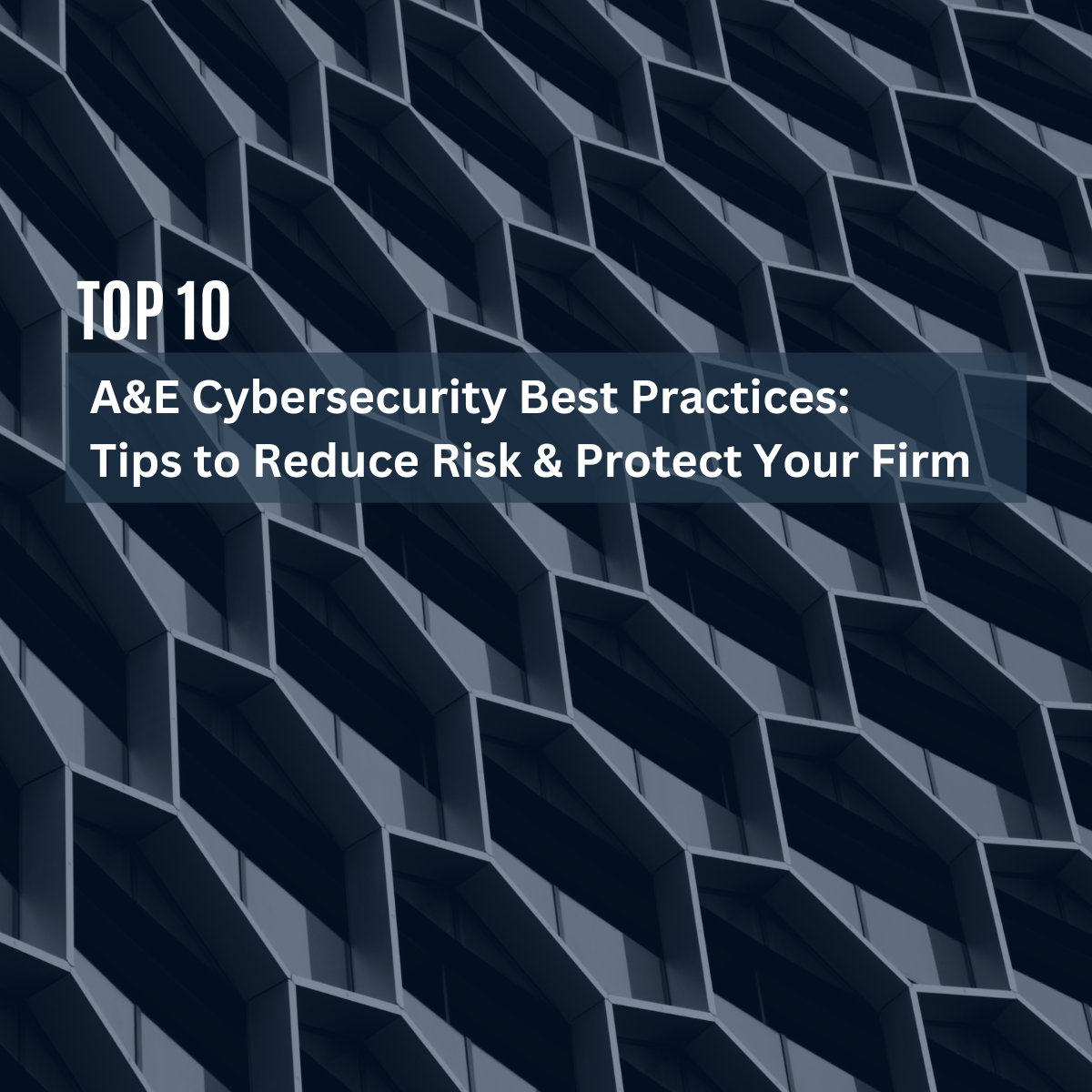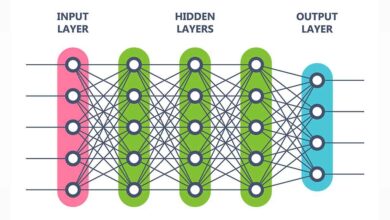
Be Cybersmart 4 ERP Security Best Practices
Be cybersmart 4 erp best practices to prioritize security – Be Cybersmart: 4 ERP Security Best Practices – that’s the mantra for any business relying on Enterprise Resource Planning systems. In today’s digital landscape, ERP systems are prime targets for cyberattacks, holding sensitive financial, operational, and customer data. This post dives deep into four crucial areas to bolster your ERP security, turning potential vulnerabilities into strengths. We’ll explore practical strategies, real-world examples, and actionable steps to ensure your ERP system remains a secure asset, not a liability.
From understanding the common threats and vulnerabilities to implementing robust security controls and maintaining a secure environment, we’ll cover everything you need to know to prioritize ERP security. We’ll also delve into risk assessment, data backup and recovery, and the importance of employee training – all vital components of a comprehensive security strategy. Get ready to learn how to protect your business from the ever-evolving world of cyber threats!
Understanding Cyber Threats in ERP Systems

Enterprise Resource Planning (ERP) systems are the backbone of many modern businesses, holding sensitive financial, operational, and customer data. Because of this central role, they are increasingly attractive targets for cybercriminals. Understanding the specific threats and vulnerabilities these systems face is crucial for effective security. This section explores the common threats, vulnerabilities, and real-world examples to illustrate the importance of robust ERP security measures.
Common Cyber Threats Targeting ERP Systems
ERP systems are vulnerable to a wide range of cyber threats, many of which exploit weaknesses in the system’s design, configuration, or user practices. These threats can significantly disrupt operations, damage reputation, and lead to substantial financial losses. The most prevalent threats include malware infections, phishing attacks, SQL injection, denial-of-service attacks, and insider threats. Malware can compromise data integrity and availability, while phishing attacks exploit human error to gain unauthorized access.
SQL injection attempts to manipulate database queries, and denial-of-service attacks overwhelm the system, rendering it inaccessible. Insider threats, unfortunately, often stem from malicious or negligent employees with access to sensitive information.
Vulnerabilities Exploited in ERP System Breaches
Successful breaches of ERP systems often leverage specific vulnerabilities. These weaknesses can reside in the ERP software itself, its configuration, or the network infrastructure it operates within. Outdated software, weak passwords, insufficient access controls, and lack of proper patching are common vulnerabilities. Furthermore, poorly configured network security, such as insufficient firewalls or intrusion detection systems, can significantly increase the risk of a successful attack.
A lack of robust security awareness training for employees also creates a significant vulnerability, leaving the system open to social engineering attacks.
Examples of Real-World ERP Security Incidents and Their Consequences
Several high-profile ERP security incidents highlight the severe consequences of inadequate security measures. For example, a manufacturing company suffered a ransomware attack that encrypted their ERP system, halting production and leading to significant financial losses due to downtime and recovery costs. In another instance, a retail company experienced a data breach due to a phishing attack that compromised employee credentials, resulting in the exposure of sensitive customer data and substantial fines due to regulatory non-compliance.
These examples demonstrate the far-reaching impact of ERP system compromises, impacting not only financial stability but also brand reputation and legal compliance.
Comparison of ERP System Vulnerabilities and Their Potential Impact
| Vulnerability Type | Description | Potential Impact | Mitigation Strategies |
|---|---|---|---|
| Outdated Software | Using outdated ERP software with known vulnerabilities. | Data breaches, system crashes, operational disruptions. | Regular software updates and patching. |
| Weak Passwords | Using easily guessable or reused passwords. | Unauthorized access, data theft, malware infections. | Strong password policies, multi-factor authentication. |
| Insufficient Access Controls | Lack of proper authorization and role-based access control. | Data breaches, unauthorized modifications, data leakage. | Implement robust access control mechanisms, least privilege principle. |
| Unpatched Systems | Failure to apply security patches and updates. | Exploitation of known vulnerabilities, malware infections, system compromises. | Regular security patching and vulnerability scanning. |
Prioritizing Security Measures
Protecting your ERP system isn’t about implementing every security feature available; it’s about strategically prioritizing measures based on the specific risks your organization faces. A risk-based approach ensures you focus resources where they’ll have the most impact, minimizing vulnerabilities that could cause the most damage. This approach is far more effective than a blanket approach to security.A proactive and well-defined risk assessment is the cornerstone of effective ERP security.
It allows for the identification of vulnerabilities and the prioritization of mitigation efforts. This isn’t a one-time exercise; regular reassessments are crucial to adapt to evolving threats and changes within your organization.
ERP System Risk Assessment Best Practices
A thorough risk assessment involves identifying assets, threats, vulnerabilities, and the likelihood and impact of potential incidents. This process should consider both internal and external threats, including malicious actors, accidental data breaches, and natural disasters. For example, a company heavily reliant on its ERP for manufacturing processes faces different risks than a retail company primarily using its ERP for sales and inventory management.
The former might prioritize preventing production downtime, while the latter might focus on data protection related to customer transactions. A detailed inventory of all your ERP components, including hardware, software, data, and users, is the starting point. Following this, a threat modeling exercise should be undertaken to identify potential threats and their entry points into the system.
Identifying and Prioritizing Critical Vulnerabilities
Once potential threats are identified, the next step is to pinpoint vulnerabilities within your ERP system that could be exploited. This often involves penetration testing, vulnerability scanning, and security audits. Prioritization depends on the likelihood of a threat exploiting a vulnerability and the potential impact of a successful attack. For instance, a vulnerability allowing unauthorized access to sensitive financial data would be considered higher priority than a vulnerability affecting a less critical module.
Prioritization frameworks like the CVSS (Common Vulnerability Scoring System) can provide a standardized approach to ranking vulnerabilities. A matrix can be created, plotting the likelihood of exploitation against the potential impact, allowing for a visual representation of the risk.
Quantifying Risk
Quantifying risk involves assigning numerical values to the likelihood and impact of each vulnerability. This can be done using qualitative scales (e.g., low, medium, high) or quantitative methods (e.g., assigning probability scores and financial impact estimates). For example, a vulnerability with a high likelihood of exploitation and a high financial impact (e.g., data breach leading to significant fines and reputational damage) would receive a much higher risk score than a vulnerability with a low likelihood and low impact.
The assigned risk scores guide the prioritization of remediation efforts, ensuring that the most critical vulnerabilities are addressed first.
Developing a Comprehensive ERP Security Policy
A robust security policy is essential for guiding the implementation and maintenance of security measures. This policy should clearly Artikel roles, responsibilities, and procedures for managing security risks.
- Define clear security roles and responsibilities: Specify who is responsible for which security tasks.
- Establish access control policies: Implement strong password policies, multi-factor authentication, and least privilege access controls.
- Artikel incident response procedures: Develop a plan for handling security incidents, including detection, containment, eradication, recovery, and post-incident activity.
- Implement regular security awareness training: Educate employees about security threats and best practices.
- Establish a vulnerability management process: Define a process for identifying, assessing, and remediating vulnerabilities.
- Mandate regular security audits and penetration testing: Conduct these assessments to identify weaknesses and ensure the effectiveness of security controls.
- Implement data backup and recovery procedures: Regular backups are crucial for business continuity in case of data loss.
- Establish a process for reviewing and updating the security policy: The policy should be regularly reviewed and updated to reflect changes in technology and threats.
Implementing Robust Security Controls
Protecting your ERP system requires a multi-layered approach to security. Simply having the system in place isn’t enough; robust controls are crucial to safeguarding your sensitive business data from unauthorized access, modification, or destruction. This involves a combination of technical measures and well-defined policies and procedures.
Essential Security Controls for ERP Data Protection
Effective ERP security relies on a layered defense strategy. This includes access control, data encryption, regular security audits, intrusion detection and prevention systems, and robust change management processes. Each layer contributes to a comprehensive security posture, minimizing vulnerabilities and mitigating risks. For example, strong authentication prevents unauthorized access, while data encryption protects sensitive information even if a breach occurs.
Regular audits identify and address vulnerabilities before they can be exploited. A well-defined change management process ensures that system updates and modifications are properly vetted and implemented securely.
Strong Authentication and Authorization Mechanisms, Be cybersmart 4 erp best practices to prioritize security
Strong authentication methods are paramount for preventing unauthorized access to the ERP system. Multi-factor authentication (MFA), which requires multiple forms of verification (e.g., password, one-time code from a mobile app, biometric scan), significantly enhances security. Beyond authentication, authorization controls determine what specific actions a user is permitted to perform within the system, based on their role and responsibilities.
Role-Based Access Control (RBAC) is a common approach, assigning users to roles with predefined permissions. For instance, a finance manager might have access to financial reports and transactions, while a sales representative might only have access to customer data and order processing. Implementing least privilege access, granting users only the necessary permissions for their roles, further minimizes the impact of potential breaches.
Data Encryption Best Practices
Data encryption is a critical component of ERP security, protecting data both in transit (while being transmitted over a network) and at rest (while stored on servers or databases). Encryption transforms data into an unreadable format, making it incomprehensible to unauthorized individuals. For data in transit, HTTPS (Hypertext Transfer Protocol Secure) is essential, encrypting communication between the ERP system and users’ browsers or other applications.
For data at rest, database encryption and file-level encryption are crucial. This ensures that even if a database server is compromised, the data remains protected. Regular key management practices, including key rotation and secure storage, are vital for maintaining the effectiveness of encryption. Consider using strong encryption algorithms like AES-256 for both in-transit and at-rest data encryption.
Comparison of Encryption Methods
| Encryption Method | Algorithm | Data at Rest/In Transit | Strengths |
|---|---|---|---|
| AES (Advanced Encryption Standard) | AES-128, AES-192, AES-256 | Both | Widely adopted, robust, and considered secure. AES-256 offers the highest level of security. |
| RSA (Rivest-Shamir-Adleman) | Various key sizes | Primarily at rest, also used for key exchange in transit | Asymmetric encryption, suitable for digital signatures and key exchange. |
| 3DES (Triple DES) | Triple application of DES algorithm | Both | Legacy algorithm, less secure than AES, but still used in some legacy systems. |
| ECC (Elliptic Curve Cryptography) | Various curve sizes | Both | Provides comparable security to RSA with smaller key sizes, efficient for resource-constrained devices. |
Maintaining a Secure ERP Environment

Securing your ERP system isn’t a one-time event; it’s an ongoing commitment requiring proactive measures and vigilant monitoring. A robust security posture protects your valuable data, ensures business continuity, and safeguards your reputation. This section delves into the crucial aspects of maintaining a secure ERP environment.Regular security audits and penetration testing are essential components of a comprehensive ERP security strategy.
These processes identify vulnerabilities before malicious actors can exploit them, allowing for timely remediation and minimizing the risk of breaches. Incident response planning ensures a swift and effective reaction in the event of a security compromise, mitigating damage and restoring normal operations. Finally, a well-trained workforce is your first line of defense; employee awareness and training are crucial for preventing and responding to security incidents.
Regular Security Audits and Penetration Testing
Security audits provide a systematic review of your ERP system’s security controls, identifying weaknesses in configuration, access management, and other critical areas. Penetration testing simulates real-world attacks to uncover vulnerabilities that audits might miss. By combining these methods, organizations gain a comprehensive understanding of their security posture and can prioritize remediation efforts effectively. For example, a recent audit of a large retail company revealed weaknesses in their access control system, allowing unauthorized users access to sensitive customer data.
Penetration testing subsequently demonstrated that this vulnerability could be exploited to gain complete system control. Addressing these issues proactively prevented a potentially devastating data breach.
Incident Response Planning and Execution
A well-defined incident response plan is crucial for minimizing the impact of a security breach. This plan should Artikel procedures for identifying, containing, eradicating, recovering from, and learning from security incidents. It should include roles and responsibilities for each team member, communication protocols, and escalation paths. Regular drills and simulations help ensure that the plan is effective and that all team members are familiar with their roles.
For instance, a financial institution’s incident response plan detailed steps for isolating compromised systems, notifying relevant authorities, and restoring data from backups, minimizing financial losses and reputational damage following a ransomware attack.
Employee Training and Awareness
Human error is a major contributor to security breaches. Employee training and awareness programs are vital for educating users about security risks and best practices. This includes training on phishing scams, password management, and safe browsing habits. Regular training sessions and awareness campaigns, using diverse methods like simulated phishing emails and interactive workshops, help reinforce good security practices and create a security-conscious culture within the organization.
A manufacturing company, for example, implemented a comprehensive training program that significantly reduced the number of phishing attacks successfully targeting its employees.
Creating and Maintaining an Effective ERP Security Awareness Program
Establishing a successful ERP security awareness program requires a multi-faceted approach.
- Needs Assessment: Identify your organization’s specific security risks and vulnerabilities.
- Program Development: Create engaging training materials tailored to different roles and levels of technical expertise.
- Implementation: Deliver training through various methods, including online modules, workshops, and newsletters.
- Measurement and Evaluation: Track the effectiveness of the program through metrics like phishing test results and security incident reports.
- Continuous Improvement: Regularly review and update the program based on feedback and emerging threats.
Lifecycle of a Typical Security Incident
Imagine a visual representation of a typical security incident lifecycle, depicted as a flow chart. It would begin with the Initial Compromise, where a vulnerability is exploited, perhaps through a phishing email leading to malware installation. This progresses to the Discovery phase, where suspicious activity is noticed, perhaps through unusual login attempts or system performance degradation. The next stage is Containment, where efforts are made to isolate the affected systems to prevent further damage.
Eradication follows, removing the malware and restoring system integrity. Recovery involves restoring data from backups and returning systems to normal operation. Finally, the Post-Incident Activity phase focuses on analysis, lessons learned, and improvements to security policies and procedures to prevent similar incidents in the future. This cyclical process highlights the iterative nature of security management.
Best Practices for Data Backup and Recovery: Be Cybersmart 4 Erp Best Practices To Prioritize Security
Protecting your ERP system’s data is paramount. A robust backup and recovery strategy isn’t just a good idea; it’s a necessity to ensure business continuity and prevent irreversible data loss. This section Artikels best practices for implementing a comprehensive data protection plan.Data loss can cripple an organization, halting operations and potentially leading to significant financial losses and reputational damage.
The consequences are far-reaching, impacting everything from customer relationships to regulatory compliance. A well-defined backup and recovery plan mitigates these risks, allowing for quick recovery and minimizing disruption.
Data Backup Strategies for ERP Systems
Choosing the right backup strategy depends on factors like the size of your ERP system, the frequency of data changes, your recovery time objective (RTO), and your recovery point objective (RPO). Several strategies exist, each with its own advantages and disadvantages.
- Full Backups: A full backup copies all data from the ERP system. It’s the most comprehensive but also the slowest and most resource-intensive. Full backups are typically performed less frequently, perhaps weekly or monthly, serving as a foundation for other backup methods.
- Incremental Backups: This method only backs up data that has changed since the last full or incremental backup. It’s faster and more efficient than full backups, but restoring data requires combining the full backup with all subsequent incremental backups.
- Differential Backups: Similar to incremental backups, differential backups copy only the data that has changed since the last full backup. However, each differential backup contains all changes since the last full backup, making restoration simpler than with incremental backups.
- Mirror Backups: This strategy creates an exact copy of your ERP system’s data on a separate storage device. It offers near-instant recovery but requires significant storage space and may be more complex to implement.
For ERP systems, a hybrid approach combining full backups with incremental or differential backups is often the most effective. This provides a balance between speed, efficiency, and ease of restoration.
Regular Data Backups and Disaster Recovery Planning
Regular data backups are the cornerstone of any effective disaster recovery plan. The frequency of backups should align with your RPO—how much data loss you can tolerate. For critical ERP systems, daily backups are often necessary.Disaster recovery planning goes beyond just backups. It involves defining procedures for restoring the system in the event of a disaster, such as a natural disaster, cyberattack, or hardware failure.
This plan should Artikel roles and responsibilities, communication protocols, and the location of backup data. Regular testing of the disaster recovery plan is crucial to ensure its effectiveness. A well-documented plan, regularly tested, can significantly reduce downtime and data loss in the event of an unforeseen event.
Ensuring Data Integrity and Recoverability
Data integrity and recoverability are interconnected concepts. Ensuring data integrity means verifying that the backed-up data is accurate and complete. This can be achieved through checksum verification, which compares the hash value of the original data with the hash value of the backup data. Any discrepancy indicates corruption.Recoverability focuses on the ability to restore the data quickly and efficiently.
Regular testing of the recovery process is crucial. This involves restoring a portion of the data to a test environment to verify its integrity and assess the restoration time. This proactive approach identifies and resolves any issues before a real disaster strikes.
So, you’re beefing up your ERP security with those Be CyberSmart best practices – great move! But building secure apps is key too, and that’s where understanding the development landscape comes in. Check out this article on domino app dev the low code and pro code future to see how modern approaches impact security. Ultimately, robust app development practices are a crucial part of any comprehensive ERP security strategy.
ERP Data Recovery Process
A well-defined process is vital for a successful recovery. The steps below illustrate a typical ERP data recovery process.
- Identify the Issue: Determine the cause and extent of the data loss or system failure.
- Activate the Disaster Recovery Plan: Follow the pre-defined procedures Artikeld in the plan.
- Verify Backup Integrity: Check the integrity of the selected backup using checksum verification or other methods.
- Restore Data: Restore the data from the backup to a recovery environment, either a physical server or a virtual machine.
- Verify Data Integrity: After restoration, verify the integrity and completeness of the restored data.
- System Testing: Conduct thorough testing to ensure the system functions correctly.
- Failover and System Recovery: Transition back to the main system or continue operations on the recovery system.
- Post-Incident Review: Analyze the incident to identify areas for improvement in the backup and recovery process.
Closing Summary
Securing your ERP system isn’t a one-time task; it’s an ongoing commitment. By understanding the landscape of cyber threats, prioritizing risks, implementing robust controls, and maintaining a vigilant approach, you can significantly reduce your vulnerability. Remember, a proactive and layered security strategy, combined with regular employee training and awareness, is the key to keeping your valuable data safe. Don’t wait for a breach – take control of your ERP security today!
FAQ Guide
What are the common signs of an ERP security breach?
Unusual login activity, slow system performance, data inconsistencies, unauthorized access alerts, and unusual network traffic are all potential indicators.
How often should I perform security audits and penetration testing?
Ideally, security audits should be conducted annually, and penetration testing at least semi-annually, or more frequently depending on your risk assessment.
What is the role of cloud providers in ERP security?
If using a cloud-based ERP, your cloud provider shares responsibility for security. However, you retain responsibility for your data and configurations within the system. A clear understanding of shared responsibility is crucial.
How can I ensure my employees are adequately trained on ERP security?
Implement regular training programs, using a mix of online modules, workshops, and phishing simulations to keep employees aware of current threats and best practices.





